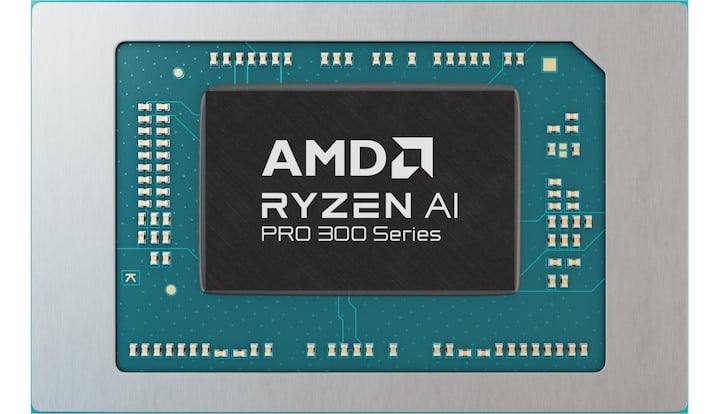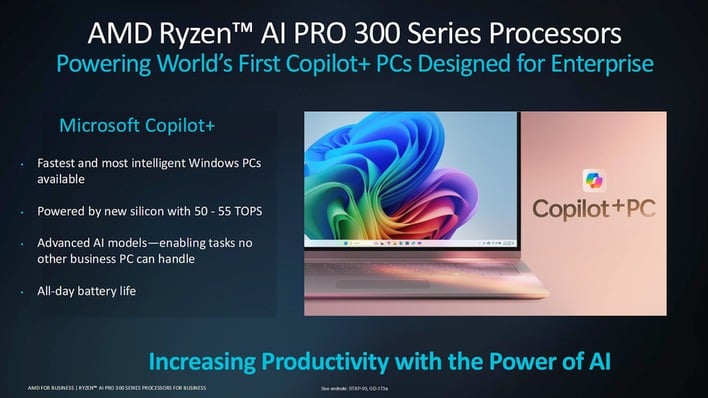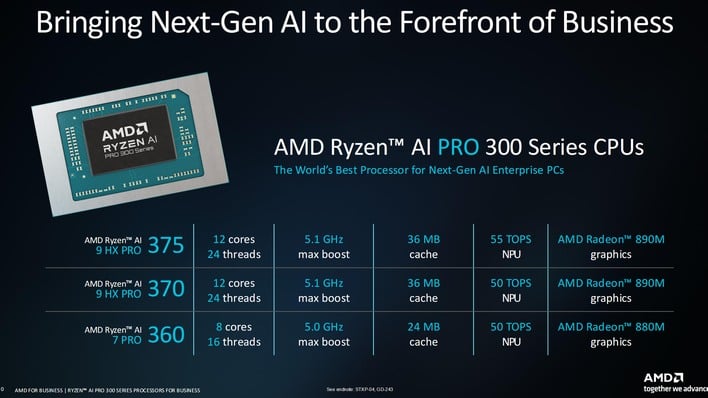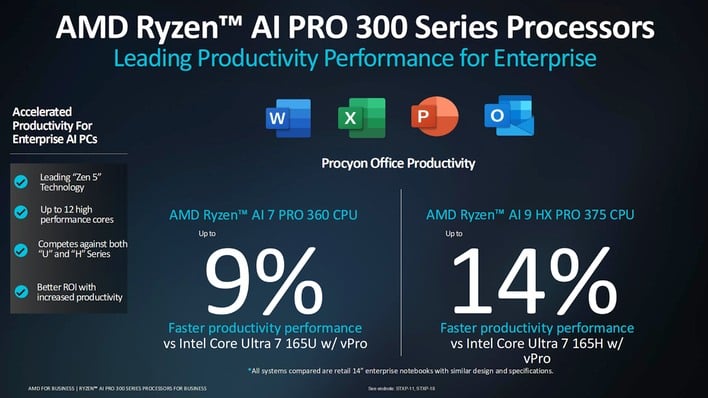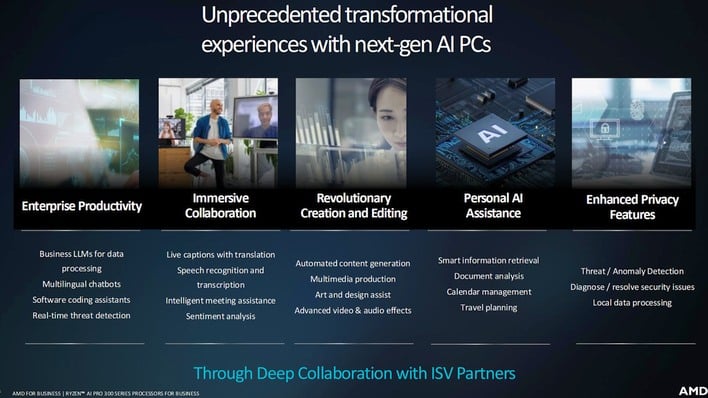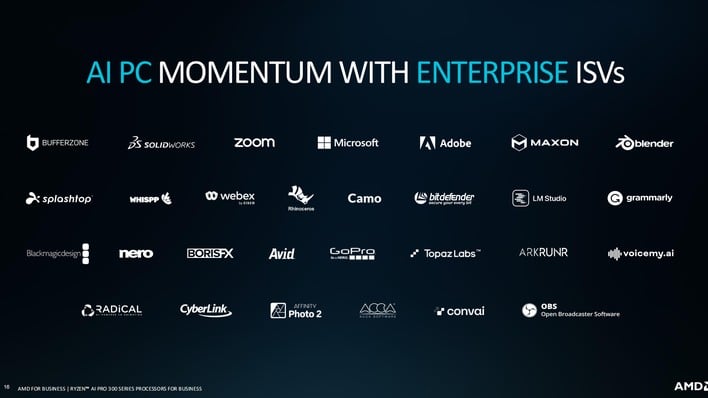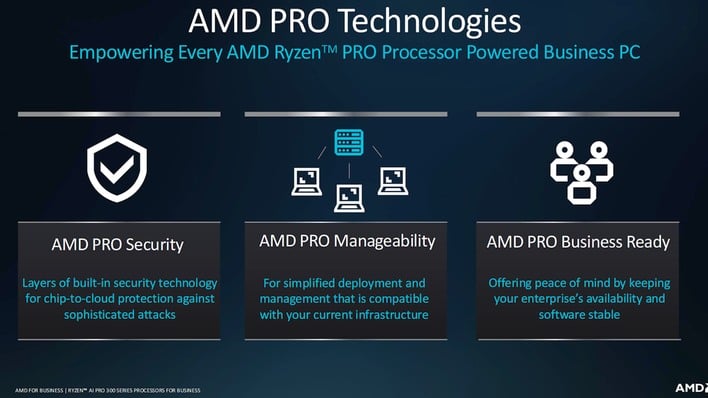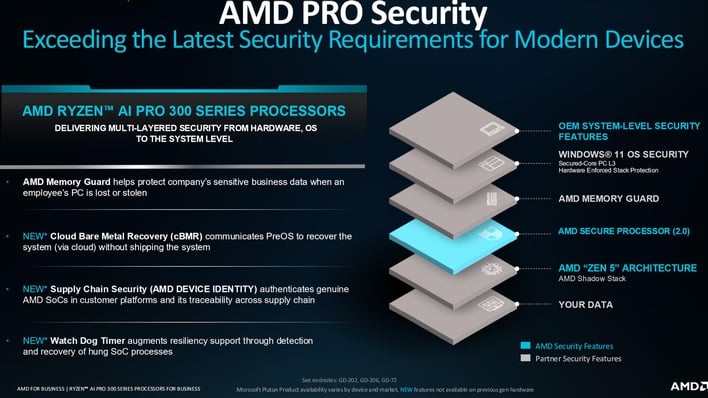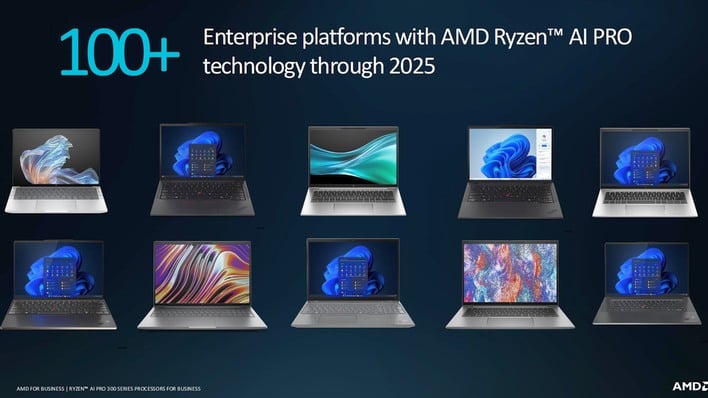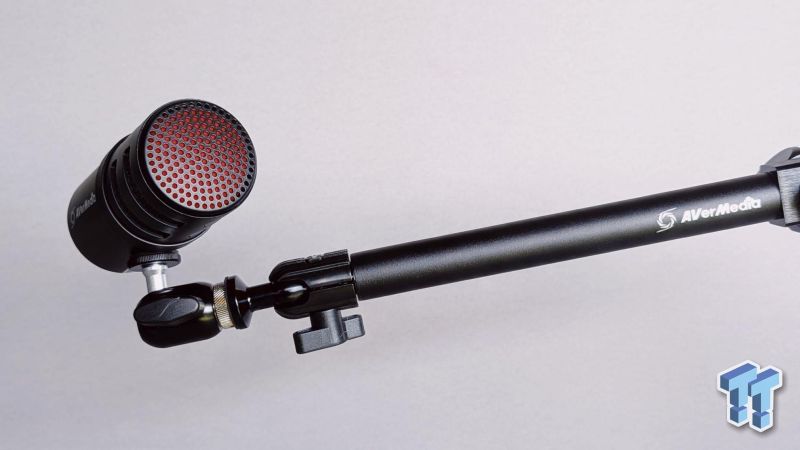AMD’s cadence in laptop processors has traditionally followed a specific playbook: new consumer Ryzen parts come out, and then a few months later, the PRO versions of those parts hit the market for enterprise and commercial client devices. AMD has been marketing and selling PRO processors since at least the good ol’ days of construction cores and GCN GPUs, but today’s mobile AMD processors are a world away from the PRO brand’s origins in almost every conceivable metric. Here comes the Ryzen AI PRO 300 series.
Indeed, this latest generation of AMD Ryzen PRO processors are in fact “Ryzen AI PRO” SoCs, and that makes them the very first Copilot+ PC platform that is available with enterprise-focused “Pro” features. As you could guess from the name, these parts are based on the same silicon as AMD’s Ryzen AI 300 family, and so they come with the same potent up-to-55-TOPS NPU as those chips. In fact, let’s not beat around the bush; here’s the new family of CPUs:
Meet The AMD Ryzen AI PRO 300 Series, And Performance Claims
Three models in total, and somewhat unusually, they aren’t exact analogs of the consumer-focused Ryzen AI 300 series. While the Ryzen AI 9 HX PRO 370 and Ryzen AI 9 HX PRO 375 are simply enterprise-ready versions of extant Strix Point processors, the Ryzen AI 7 PRO 360 represents a configuration that we haven’t seen elsewhere.

AMD offers this helpful slide to compare the previous-generation Ryzen PRO parts against the new chips. Strix Point is a step forward over Hawk Point in lots of specific ways, as nearly every single part of the processor has been revised. Each of the CPU, the GPU, and especially the NPU gets additional cores and new a architecture, offering improved performance across the board while staying in the same TDP envelope—at least, theoretically.
AMD makes some very direct comparisons against Intel’s Core Ultra processors in its presentation, including the slide above which pits an eight-core Ryzen AI 7 PRO 360 against a Core Ultra 7 165U while the Ryzen AI 9 HX PRO 375 goes head to head against a Core Ultra 7 165H. We’re not quite sure why AMD didn’t compare against the Core Ultra 9 185H; that part does come in a VPro version.
Software Support From The Ecosystem Will Be Key
Of course, with all the chatter around NPUs and “AI PCs”, there has naturally come the question of what exactly all this AI-focused compute actually enables. AMD has the slide above which lists many practical use-cases for AI running on NPUs, though most of this is somewhat theoretical at this point, and what is available is largely still cloud-powered at this time.
However, AMD does note that it has partnered with at least 29 different software vendors providing productivity and business programs to get bleeding-edge AI features running on its NPU. This is important, because currently, AMD’s Ryzen AI PRO 300 chips have the fastest NPU in the business, and if it isn’t getting used, that’s a whole lot of silicon going to waste.
AMD PRO Technologies Evolve And Expand With A Focus On Security
It was never in question, but these new AMD PRO processors obviously include the usual PRO Technologies, like remote manageability, business-grade validation, and advanced security and recovery features. Actually, it’s in the security sector where things have changed a bit on the new parts, with an upgrade to AMD Secure Processor 2.0.
AMD’s debuting three new security features with the Ryzen AI PRO 300 family: Cloud Bare Metal Recovery, Supply Chain Security, and Watch Dog Timer. AMD didn’t give us many specific details on these features, but it looks like Cloud Bare Metal Recovery will allow techs to remotely recover systems at the OS level, saving shipping costs. It also seems like the new Watch Dog Timer feature will improve stability by automatically attempting to recover hung processes in some way.
AMD Ryzen AI PRO 300 Series Laptops Are Inbound
AMD says that there will be more than one-hundred different Enterprise platforms available with these processors through 2025. That’s a bit of a tricky statement, and obviously the end of 2025 is more than a year away. This tells us little about when or how many of these systems will be available this year. That said, these new processors are considered to be launched as of today, so now it’s up to the major system OEMs to deliver the goods, and we’re eager to kick the tires on them.
